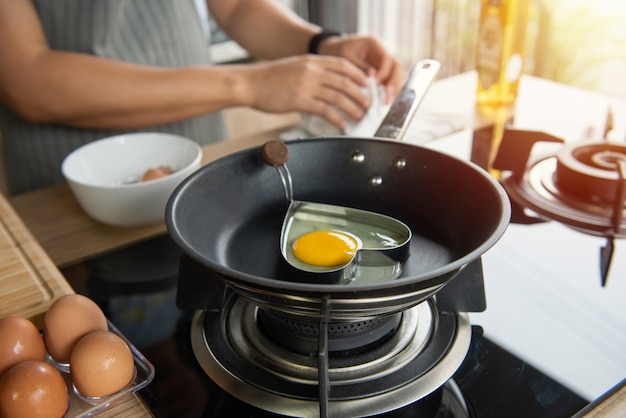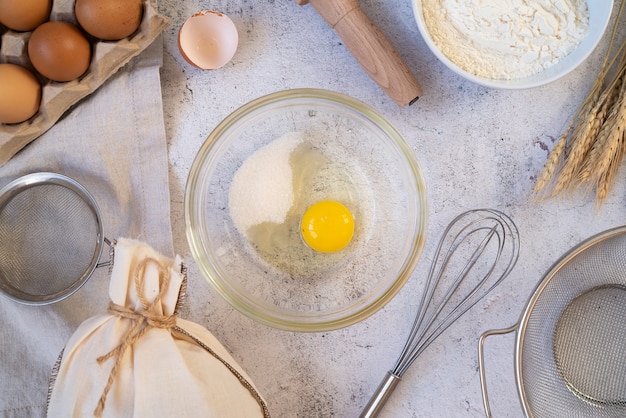Let’s face it, we all love a good soft boiled egg. That creamy, runny yolk with a perfectly cooked white is a breakfast dream. But let’s be honest, the traditional stovetop method can be a bit of a hassle, especially when you’re rushing in the morning. That’s where the microwave comes in, offering a quick and easy solution to our soft boiled egg cravings.
Now, I’ll admit, I’ve been there – those early attempts at microwave eggs were a disaster. Explosions, rubbery whites, that awful sulfurous smell… it’s enough to make you swear off the microwave for good. But fear not, my friends, because I’ve cracked the code (pun intended!), and I’m ready to share my secrets for achieving perfect, consistently delicious microwave soft boiled eggs.
Part 1: A Microwave Soft Boiled Egg Journey

My journey to microwave mastery started with a desperate need for a quick breakfast. I was running late, as usual, and the idea of fiddling with a pot on the stove was simply not an option. So, I thought, “What the heck, let’s try the microwave.” Big mistake. My first few attempts were a train wreck. Eggs exploding in the microwave, leaving a sticky mess that took ages to clean. And the eggs themselves? Forget about it – hard as rocks, rubbery, and utterly unappetizing.
Determined not to be defeated, I embarked on a quest for microwave soft boiled egg perfection. I dove headfirst into the internet, scouring articles, recipes, and forums. I experimented with different microwaves, egg sizes, and even tried adding a dash of vinegar to the water (apparently, it’s a thing!). My kitchen became a science lab, filled with steaming bowls and various egg-related casualties. But, through trial and error, I finally found a method that consistently delivered the soft boiled egg of my dreams.
Part 2: The Essential Tools

Before diving into the recipe, let’s talk about the tools of the trade. You probably have most of these already in your kitchen, but here’s a quick checklist:
- Microwave-safe bowl: This is non-negotiable. You need a bowl that’s large enough to hold your eggs comfortably and has a secure lid to prevent any messy explosions.
- Measuring cup: Accurate measurements are key here. You’ll need this to ensure you’re using the right amount of water.
- Eggs: You can’t make soft boiled eggs without them, can you? fresh eggs are ideal, but if you’re using older eggs, just add a bit more water to the bowl to compensate.
- ice bath: This is a game changer. An ice bath is essential for stopping the cooking process and ensuring that your yolk stays nice and runny.
- Egg spoon (optional): This handy tool makes it much easier to scoop the eggs out of the ice bath without damaging them.
- Salt and pepper (optional): For that final touch of flavor, of course!
Part 3: The Microwave Soft boiled egg recipe

Here’s the recipe that I’ve perfected over countless trials and tribulations. It’s simple, foolproof, and consistently delivers perfectly cooked soft boiled eggs.
Ingredients:
- 1 egg per person
- 1/2 cup of water per egg
- Ice water (for the ice bath)
Instructions:
- Prepare the eggs: Wash the eggs and place them in the microwave-safe bowl.
- Add the water: Pour the water into the bowl, ensuring it completely covers the eggs.
- Cover the bowl: Place the lid on the bowl, making sure it’s securely closed.
- Microwave: Microwave the eggs on high power for 45 seconds per egg.
- Ice bath: Immediately transfer the bowl to a sink filled with ice water. Let the eggs cool in the ice bath for 5 minutes.
- Remove and serve: Carefully remove the eggs from the ice bath, using an egg spoon if you have one. Gently crack the shell and enjoy your perfectly soft boiled egg!
You might be thinking, “45 seconds per egg? That seems ridiculously short!” But trust me on this one. The key is to use a microwave with sufficient power. If your microwave is on the weaker side, you might need to add an extra 15 seconds per egg. But in most cases, 45 seconds is the magic number for perfect soft boiled eggs.
Part 4: The Science Behind the Microwave Magic
You might be wondering, why does this method even work? It’s all about controlling the heat and the cooking time. By using a microwave-safe bowl with a lid, you create a steam bath effect. The steam helps to cook the egg evenly, while the short cooking time ensures that the yolk stays nice and runny.
The ice bath is crucial for stopping the cooking process and preventing the yolk from overcooking. The sudden temperature change helps to solidify the egg whites while leaving the yolk soft and creamy. It's like a quick temperature shock that perfectly sets the egg.
Part 5: Tips for Perfect Microwave Soft Boiled Eggs
Here are a few tips to help you achieve even better results:
- Use fresh eggs: Fresh eggs cook more evenly and have a richer yolk. If you’re using older eggs, add a bit more water to the bowl to ensure they cook thoroughly.
- Don’t overcrowd the bowl: Give the eggs some space to allow the steam to circulate evenly around each one.
- Start with a lower power setting: If you’re not sure about your microwave’s power, start with a lower power setting and gradually increase the cooking time. It’s better to err on the side of caution than to end up with overcooked eggs.
- Use a thermometer: For ultimate precision, you can use a meat thermometer to check the internal temperature of the yolk. A soft boiled egg should have a yolk temperature of around 145°F (63°C).
Part 6: Exploring Variations
Once you’ve mastered the basics, you can experiment with different variations. Here are a few ideas to get you started:
- Spicy soft boiled eggs: Add a pinch of cayenne pepper to the water before cooking for a touch of heat.
- Soft boiled eggs with herbs: Add a few sprigs of fresh herbs like dill or parsley to the water for a fragrant twist.
- Soft boiled eggs with a twist: Try adding a teaspoon of soy sauce or balsamic vinegar to the water for a savory twist.
- Eggs for dipping: Serve your soft boiled eggs with your favourite dipping sauce, such as hollandaise or aioli. The creamy yolk is perfect for dipping.
Part 7: Beyond Breakfast
Soft boiled eggs aren’t just for breakfast. They are incredibly versatile and can be enjoyed at any time of day. Here are some ideas for how to incorporate them into your meals:
- Lunch: Make a simple and satisfying salad with soft boiled eggs, spinach, and a vinaigrette dressing.
- Dinner: Add soft boiled eggs to your favourite soup or stew for a hearty and filling meal. The creamy yolk adds richness and depth to any broth.
- Snacks: Soft boiled eggs are a great source of protein and can be enjoyed as a quick and healthy snack.
- deviled eggs: For a party or special occasion, turn your soft boiled eggs into deviled eggs.
Part 8: The Perfect Soft Boiled Egg Experience
The perfect soft boiled egg experience goes beyond just the taste. It’s the whole shebang: the anticipation, the preparation, the satisfying crack of the shell, and the luxurious ooze of the yolk. It’s a sensory experience that’s hard to beat.
For me, the perfect soft boiled egg experience involves a sunny morning, the smell of freshly brewed coffee, and a perfectly cooked soft boiled egg waiting to be enjoyed. The joy of cracking the shell and watching the yolk ooze out is truly a sight to behold. And when you pair it with a slice of toast or a sprinkle of salt and pepper, it’s a symphony of flavors that’s simply irresistible.
Part 9: The Soft Boiled Egg Table
Here's a table that summarizes the different cooking times for soft boiled eggs, depending on your preference:
| Cooking Time (Seconds) | Yolk Texture |
|---|---|
| 30-40 | Very runny yolk |
| 45-55 | Runny yolk |
| 60-70 | Slightly runny yolk |
| 75-85 | Jammy yolk |
| 90 | Hard yolk |
Experiment with different cooking times to find your perfect soft boiled egg.
FAQs
1. What if my eggs are too small?
If you're using smaller eggs, you can reduce the cooking time by a few seconds. Start with 40 seconds and adjust based on your preference.
2. What if my microwave doesn't have high power?
If your microwave has a lower power setting, you'll need to increase the cooking time slightly. Start with an extra 10 seconds per egg and adjust based on your results.
3. Can I use a different bowl?
Yes, you can use a different bowl, but it's crucial that it's microwave-safe and has a lid to prevent explosions.
4. What if my eggs explode?
Don’t worry, it's happened to the best of us! If your eggs explode, it’s usually because the bowl isn’t sealed properly or because the eggs are too old. Try re-boiling the eggs with fresh water, and be sure to seal the lid tightly.
5. Why should I add ice to the water?
Adding ice to the water is essential for stopping the cooking process and preventing the yolk from overcooking. It also helps to solidify the egg whites, making it easier to peel them.
There you have it, my friends. The secrets to microwave soft boiled egg perfection, revealed! So ditch the stovetop and embrace the convenience of the microwave. It’s quicker, easier, and produces perfectly cooked eggs every time.
Everyone is watching

How to Cook Frozen Lobster Tails Perfectly: A Step-by-Step Guide
RecipesLobster. Just the word conjures up images of lavish meals, special occasions, and a taste of luxury. But let's...

Pigs in a Blanket Cooking Time: How Long to Bake for Perfect Results
RecipesAh, pigs in a blanket. Just the name conjures up images of those delightful little parcels of crispy pastry en...

Pork Fillet Cooking Time: How Long to Cook It Perfectly
RecipesPork fillet, or tenderloin as it's sometimes called, is a real favourite in our house. It's so versatile, and...

The Ultimate Guide to Cooking Delicious Frankfurters
RecipesLet's face it, we all love a good frankfurter. It's a classic, simple, and always satisfying. But let's be rea...

Wolf Meat Recipes: A Guide to Cooking Wild Game
RecipesLet's be honest, you don't see wolf meat at your local butcher shop every day. It's a bit of a wild card, but ...
